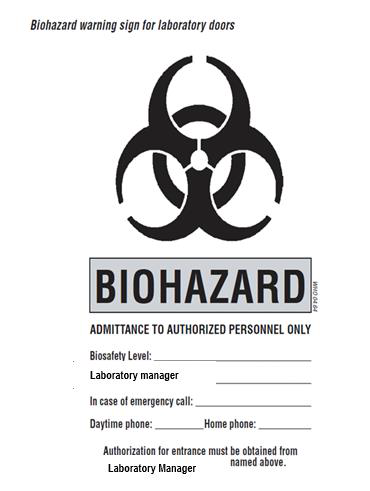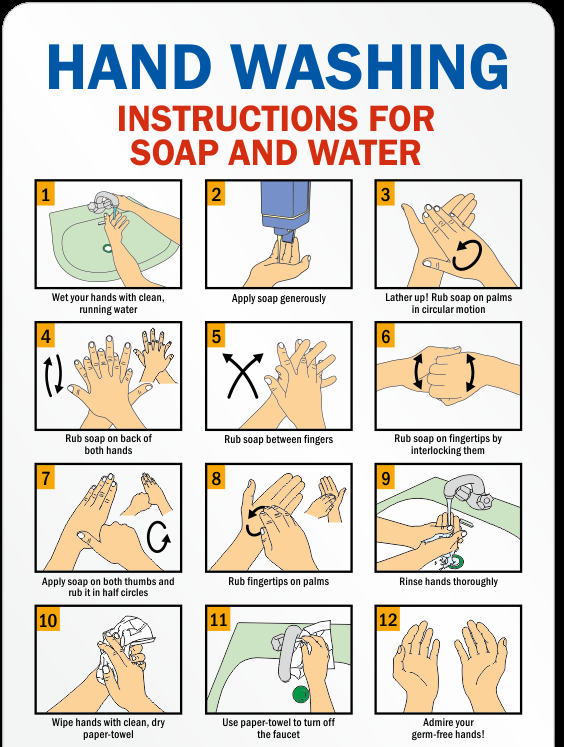The most important element of biological safety is strict adherence to standard microbiological practices and procedures. Individuals working with bio-hazardous materials must be aware of potential hazards and must be trained and proficient in the practices and techniques required for handling such material safely. The Safety Officer is responsible for identifying and adopting bio-safety practices and procedures designed to minimize or eliminate exposure to laboratory hazards and for laboratory personnel
Standard Laboratory Practices for BSL-1 Laboratories
BSL-1 is assigned to work involving well-characterized, non-bio-hazardous
agents not known to consistently cause disease in healthy human adults.
BSL-1 is suitable for work that does not involve biological agents or involves well characterized agents that are not known to cause disease in healthy adult humans, and that are of minimal potential hazard to laboratory personnel and the environment. All personnel who will be working in or frequenting animal facilities must be appropriately trained and evidence of training documented.
The following list outlines standard laboratory practices to be implemented in ABSL-1 laboratories:
- Keep the door to the laboratory closed at all times and locked when the laboratory is not in use.
- Restrict access to the facility to those who have been advised of the potential hazards and instructed in proper safeguards.
- Wear appropriate PPE. At a minimum, a lab coat, gloves, eye protection, and close-toed shoes must be worn when working in the facility. Do not wear PPE outside of the facility.
- Do not eat, drink, smoke, and apply cosmetics, or store food and beverages in the facility. Carpets and rugs are not permitted
Laboratories (wet Labs) must have a sink for hand washing. The sink should preferably be hands-free or automatically operated. It should be located near the exit door. If the laboratory is separated out into different laboratories, a sink must also be available for hand washing in each zone. Additional sinks may be required as determined by the risk assessment.
- Do not pipette by mouth. Use mechanical pipetting devices.
- Perform procedures carefully to minimize the creation of splashes or aerosols.
- Handle and dispose of sharps safely. Avoid the use of sharps when alternative methods are available.
- Use an appropriate disinfectant to decontaminate work surfaces, equipment, and instruments,daily.
- Wash hands after handling cultures and animals, after removing gloves, and before leaving the animal facility.
The international bio-hazard warning signal must be displayed on the doors of the rooms where microorganism of risk Group 2 or higher are handled.

The following list provides standard laboratory practices to be implemented in BSL-1 laboratories:
- Keep the door to the laboratory closed at all times and locked when the Laboratory Safety Officer oratory is not in use.
- Keep workspace orderly
- Clean up your workspace at the end of each laboratory period; wash, wipe and disinfect your desktop; make sure gas and water are turned off, return any special equipment or reagents in the storeroom
- Wear appropriate PPE. At a minimum, a lab coat, gloves, eye protection, and close-toed shoes must be worn when working in the laboratory. Do not wear PPE outside of the laboratory. (Lab coats are recommended for instructional labs operating at BSL-1).
- Conduct work either on the open bench top or in a bio-safety cabinet.
Bio-safety cabinets are not required for BSL-1 work
- Do not eat, drink, smoke, and apply cosmetics, or store food and beverages in the laboratory.
- Do not pipette by mouth. Use mechanical pipetting devices.
- Perform procedures carefully to minimize the creation of splashes or aerosols.
- Handle and dispose of sharps safely. Avoid the use of sharps when alternative methods are available.
- Use an appropriate disinfectant to decontaminate work surfaces, equipment, instruments, and glassware daily and immediately after a spill. This includes a wipe down of the bio-safety cabinet if one is used.
- Wash hands after completing work and before leaving the laboratory.
- Dispose of all BSL-1 waste according to waste handling procedures
- Follow additional laboratory procedures outlined in the Laboratory Safety Manual for work involving chemicals.
HAND WASHING
Keeping hands clean through improved hand hygiene is one of the most important steps we can take to avoid getting sick and spreading germs to others. Many diseases and conditions are spread by not washing hands with soap and clean, running water. If clean, running water is not accessible, as is common in many parts of the world, use soap and available water. If soap and water are unavailable, use an alcohol-based hand sanitizer that contains at least 70% alcohol to clean hands. Wash your hands for at least 15 seconds.
When should you wash your hands?
- Hand washing is a primary safeguard against inadvertent exposure to toxic chemicals or biological agents.
- Always wash your hands before leaving the laboratory, even though you use gloves.

- Wash your hands after removing soiled protective clothing, before leaving the laboratory, and before eating, drinking, smoking, or using a rest room.
- Wash your hands periodically during the day at intervals dictated by the nature of your work.
- Wash with soap and running water, with hands held downward to flush the contamination off the hands. Turn the tap off with a clean paper towel to prevent re-contamination, and dry your hands with clean towels.